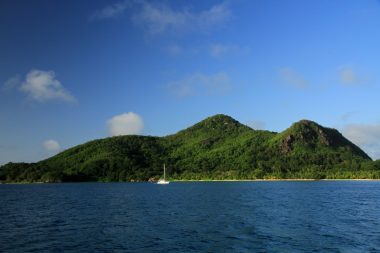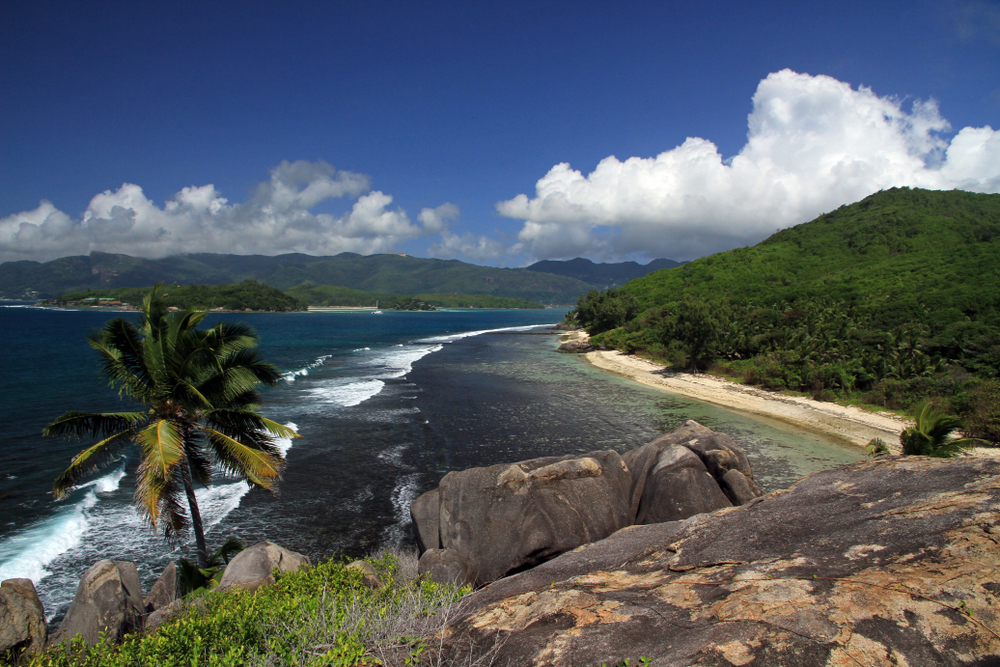After almost 180 years as a British colony, it has been independent since 1976 Republic of Seychelles off the East African coast consists of a total of about 115 islands with a total area of about 450 km² on over 430,000 km² of sea area, which are divided into the two main groups “Inner Islands” or “Outer Islands” according to their exact location.
The English were the first Europeans to enter Saint Anne, which the French deny
The beginning of permanent human settlement on the islands is still largely unclear among researchers and historians. However, it is now considered proven that Arab and Persian seafarers visited the “High Islands” or “Tsarina” (sisters) by the time they called 14. and 15th century, as evidenced by the graves from this period found in 1910.
The first Europeans were Portuguese under the leadership of Vasco de Gama, who gave the archipelago the name “Amirantes” in 1501. In the same year, the islands were first marked on a map by the Italian Alberto Cantino. The coast of what would later become the Seychelles was first described in 1609 by the British sailor John Jourdan.

In addition to his descriptions of the islands of Mahé, Silhouette and Praslin as well as their more than 30 neighboring islands, his report also mentions the island known today as Île Sainte Anne about 5 kilometers off the east coast of Mahé for the first time. Jourdan praised the island, which is only 2.9 km² in size, as beautifully green and densely overgrown as well as very rich in water, the once so numerous trees cover the island, which is up to 246 meters high, to this day.
In French historiography, however, the discovery and first entry is attributed to the navigator and explorer of the Seychelles, Lazare Picault (1700-1748), who reached Sainte Anne in 1742. However, this version is doubted by many scientists, even though the 12 km² district of Baie Lazare on the southwest coast of the main island of Mahé is named after Lazare Picault in the Seychelles in addition to many beaches and hotels. What is undoubtedly documented, however, is that the first permanent settlement existed on Sainte Anne from 1770. At the beginning of the 20th century, there was a whaling station for a short time, the ruins of which can still be visited today.
Today, the Île Sainte Anne is a private hotel island for exclusive luxury holidays
With the gradual establishment of tourism in the Seychelles in the late 1960s and early 1970s, Île Sainte Anne, which can be reached so easily and quickly by boat from Mahé and named after the alleged grandmother of Jesus Christ, gradually became more and more famous as a dreamlike tropical destination. In particular, the six snow-white and palm-lined sandy beaches along its seven-kilometre-long coastline ensure popularity and crowds.
Specifically, these are the beach sections “Grande Anse” in the southwest around the luxury hotel “Beachcomber Sainte Anne Resort & Spa”, which opened in 2002 with 87 villas, and the “Anse Royale”, which is known as a breeding area for sea turtles. The remaining and equally picturesque beaches of the island are located in the northwest (“Anse Cabot”) and southeast (“Anse Cimitiere”) as well as on the east coast (“Anse Tortues” and “Anse Manom”). Saint Anne gained some national and international fame, especially as the namesake of the Sainte-Anne Marine National Park, which was founded in 1973 and now covers a good 14 km².
A British journalist ensured reforestation and protection of sea turtles
In addition to Sainte Anne, the maritime sanctuary for rare fish, marine animals and endangered corals also includes the neighbouring and even smaller islands of Île au Cerf (1.27 km²) with currently about 100 inhabitants, three hotel resorts and a restaurant, Long Island (0.212 km²), which was once used as a state prison and quarantine station, the uninhabited Moyenne Island (0.089 km²), the breeding and nesting site for seabirds Île Cachée (0.021 km²) and the former leper colony Round Island (0.018 km²). km²), which now houses a 5-star resort with 10 villas, the beacon island of Sèche Island (0.04 km²) and the lake rock Harrison Rock (Grand Rocher).
Fishing and water skiing are prohibited in the marine park area, but the islands are one of the Seychelles’ top tourist destinations for snorkeling, diving, and glass-bottom boat day trips to the coral reefs and colorful marine life with impressive reef sharks and many more tropical fish species. Particularly well-known as a destination is the above-mentioned island of Moyenne, which was privately owned by British journalist Brendon Grimshaw from 1962 to 2012. He lived there permanently until his death, planted thousands of trees and received his visitors in the legendary “Jolly Roger Bar”.
Information and facts about Saint Anne
- Location: Sainte Anne is located about 4 kilometers east of Mahé, the largest island in the Seychelles. It belongs to the Inner Islands group and is part of the Sainte Anne Marine National Park.
- Nature reserve: The island of Sainte Anne is a nature reserve protected by the government of the Seychelles. The Marine National Park includes not only Sainte Anne, but also six other islands and the surrounding marine areas.
- Tourism: Sainte Anne is a popular destination for tourists who want to experience the natural beauty of the Seychelles. The island offers luxurious resorts and hotels that offer guests exclusive accommodations, world-class restaurants, and a variety of recreational activities such as snorkeling, diving, kayaking, and boat excursions.
- Beaches: The beaches of Sainte Anne are famous for their fine white sand and clear, warm waters. Popular beaches on the island include Anse Tortue and Anse Manon, which are perfect places to relax, sunbathe, and swim.
- Underwater World: The waters around Sainte Anne offer stunning marine life with a variety of coral reefs, colorful fish, sea turtles, rays, and other marine life. Snorkeling and diving is a popular activity for visitors to explore this fascinating underwater world.
- Nature: In addition to the beaches, Sainte Anne also offers a rich natural diversity with lush tropical vegetation, endemic plant species and a variety of bird species. The island is a nature lover’s paradise, offering plenty of opportunities for hiking, birdwatching, and exploring nature.


